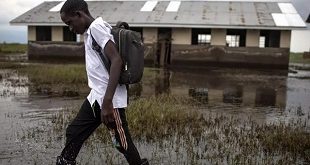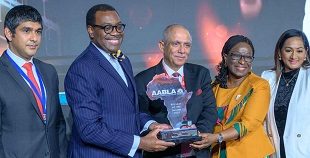
By Mubatsi Asinja Habati
The Ministry of Trade, Tourism and Industry wants to destroy the building that houses the Uganda Museum to pave way for a 20-floors trade centre building that will take 30 years to erect. Members of the public are opposed to the demolition of Uganda’s only national Museum established in 1908. Merrick Posnansky, Emeritus Professor, was the Curator of the Uganda Museum from 1958-62. The Independent’s Mubatsi Asinja Habati spoke to him.
How important is the Uganda Museum to Ugandans?
A museum is vitally important to a developing country as it provides firstly a repository for valuable remembrances of the past, items that cannot again be collected such as the drums, shields, agricultural implements and dress and ornaments of the traditional past etc. They allow Ugandans to glimpse Uganda as it existed before the Colonial period, a period of rapid change. The Uganda Museum also has a signal collection of historical artifacts such as the snakes collected by Captain Pitman, the dais on which the Independence document for Uganda was delivered etc. The Museum should be active though in collecting contemporary culture for our descendants. Things such as commemorative cloth, tee shirts, political notices, photos of buildings that are destroyed, musical instruments that might be changed and even items of technology that are replaced. This why the Science section was opened in 1962 to showcase one of Uganda’s early motor cars but they also should have a 1900’s early motor bike, photos of the Bombo-Entebbe monorail that most people have now forgotten. There should be vigorous and expanding photo archives illustrating the life of now forgotten elements of the Uganda population, such as the first Nubians at Bombo, different Asian communities, even the life of the missionaries and early catechists etc. A museum needs to be dynamic putting on new temporary exhibitions illustrating major cultural changes and movements.
Why should Uganda preserve the museum in its current state?

The museum is somewhat organic and there is a need to preserve what has been built up. It can be recreated but then that would be a reflection of 21st century knowledge. The present museum is a reflection of what curators like Margaret Trowell (who also built the Art School at Makerere), Klauss Wachman or myself felt was important. I tried to build up an historic collection that included stamps and coins, items that tell us something about Uganda’s economic history. My successor Dr Bishop established the Natural history section and emphasised the geological history of Uganda. Though some of these things can be learnt elsewhere it is vitally important to have somewhere central where young people can learn about the country in which they live. Seeing photos of past achievement and items from Uganda’s struggle for freedom are important in building up a sense of nationhood and patriotism. I was impressed when I visited Havana in Cuba or Manila to see items from their struggles for self identity. In the Museum we should do more about recording the history of Uganda, about how it all came together, about how the population asserted itself about how Uganda, a country of many peoples, is striving to build a proud nation that treasures its cultural heritage and history. There should be photos of past leaders from all spheres of life.
Why should Uganda consider preserving the current museum structure than building a 20 storey building? What makes the difference?
I have seen Museums restricted to floors of a multi-story building. They do not work. A museum needs different rooms for different exhibitions; two floors would restrict some movement. There is so much that a Museum needs to show that there has to be room for constant growth. One cannot transfer the contents of a museum safely. Many items are extremely fragile. I was shocked, yes shocked, when in 1989 I visited the Museum and observed how in twenty years through bad curation (caused largely by the horrible political history and economic conditions of the time) many items had deteriorated. There has to be constant care, re-bagging and re-labelling materials all the time, guarding against insect infestation.
Is it possible to transfer museum collections safely?
Uganda is a tropical country and there is a need to be on constant guard to protect what one has. With removal and storage until a new museum is built items will be damaged and being fragile many will get broken. We do not have people with the old craft skills to repair such items. Items in a museum provide a way for crafts folk to remember old technologies. Hiding items away removes such a traditional transfer of knowledge.
Are there specified temperature conditions under which some museum collections should be stored?
Most ethnographic items, that means the bulk of the Museum’s treasures, need to be kept at temperatures a little over 70° F and at lower humidity. The important thing is constancy. It is the rise and fall of humidity and temperatures that leads to significant deterioration. A change in temperature and humidity leads to sweating, to splitting of wood, of warping etc. Alas many museum workers in Africa do not go through the necessary training in conservation and most countries cannot afford the showcases that provide constant atmospheres, still less the air conditioning of rooms. In places like Egypt fragile material survives because of the dry conditions. Insects do not survive in conditions that are dry, cool etc, they like humid and warm conditions. Feathers and skins quickly disintegrate. Items need to be aired out so that there is free flow of air etc. When we started the Museums Association of Middle Africa at Kampala in 1959 it was no accident that our first publication, sadly now unobtainable, was on the care of ethnographic items in tropical conditions.
 The Independent Uganda: You get the Truth we Pay the Price
The Independent Uganda: You get the Truth we Pay the Price


